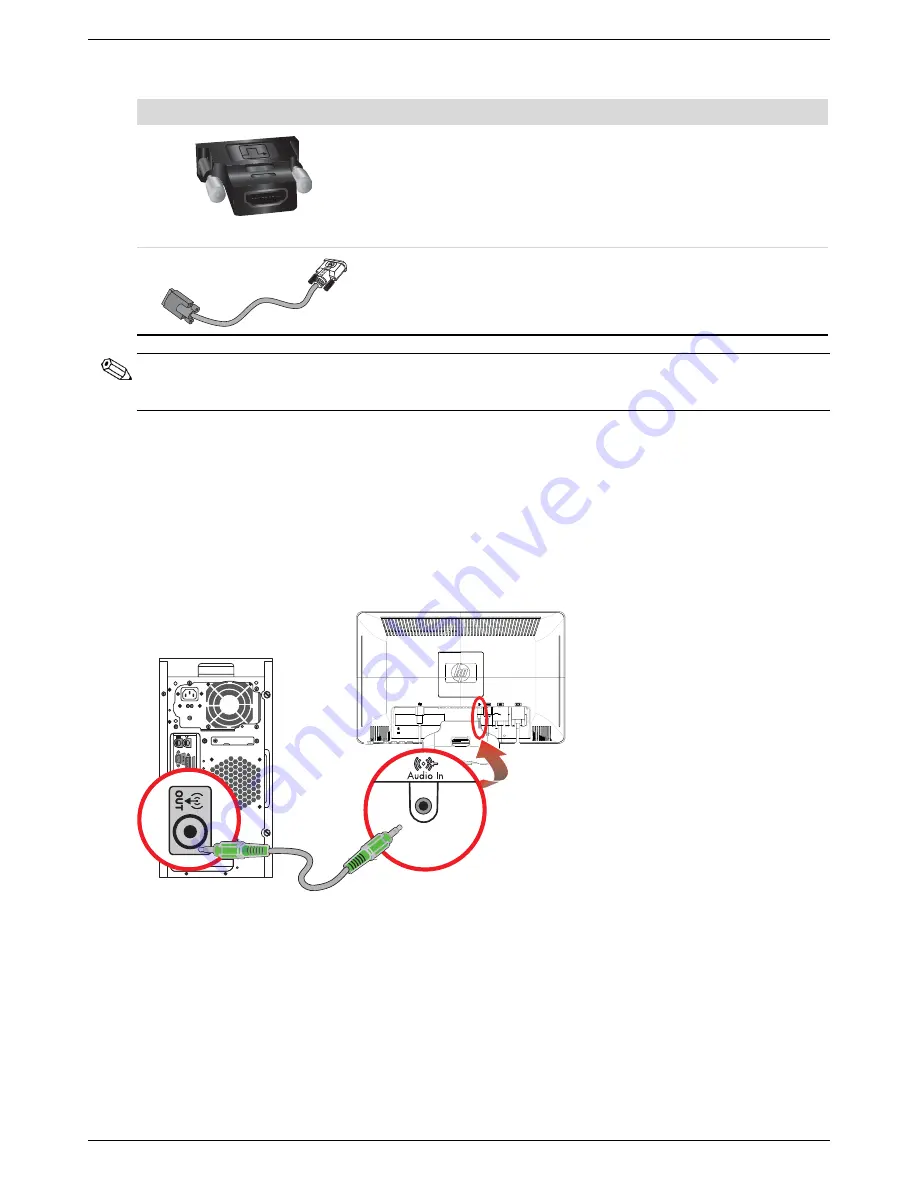
Setting Up the Monitor
User’s Guide
3–7
High-Bandwidth Digital Content Protection (HDCP)
If your monitor supports HDCP, it can receive high-definition content. High-definition content is available in many
sources, such as Blu-ray Disc devices or HDTV air or cable broadcasts. If you do not have an HDCP-enabled monitor,
you may see a black screen or a lower resolution picture when playing high-definition protected content. Your
computer graphic card and monitor must both support HDCP to display protected content.
Connecting the Audio Cable
Connect the built-in monitor speakers to the computer by using the audio cable, as shown in the following illustration.
Connecting the audio cables—connector locations may vary
DVI-to-HDMI adapter
Connects a DVI monitor to an HDMI connector on
the back of the computer, TV, or set-top box or
connects an HDMI monitor to a DVI connector on
the back of the computer, TV, or set-top box.
NOTE:
If you use a DVI-to-HDMI adapter, you must
connect the green audio cable to enable the
speakers.
VGA-to-DVI-I cable
Connects a DVI monitor to a VGA connector on the
back of the computer, TV, or set-top box or connects
a VGA monitor to a DVI connector on the back of
the computer, TV, or set-top box.
Cable/Adapter (Continued)
Name
Description
NOTE:
When using a VGA or DVI signal, you must connect your audio separately because a VGA or DVI signal
converts only video data, not audio data. A separate audio connection is not necessary when you use an HDMI
signal, because an HDMI signal can convert both video and audio data.
Summary of Contents for 1859M
Page 1: ...User s Guide 1859m 2009m v f 2159m v 2309m v ...
Page 4: ...iv Features may vary by model User s Guide ...
Page 30: ...Preparing the Monitor for Shipping 5 2 Features may vary by model User s Guide ...
Page 34: ...Troubleshooting A 4 Features may vary by model User s Guide ...
Page 46: ...Agency Regulatory Notices C 6 Features may vary by model User s Guide ...
















































